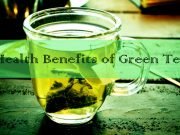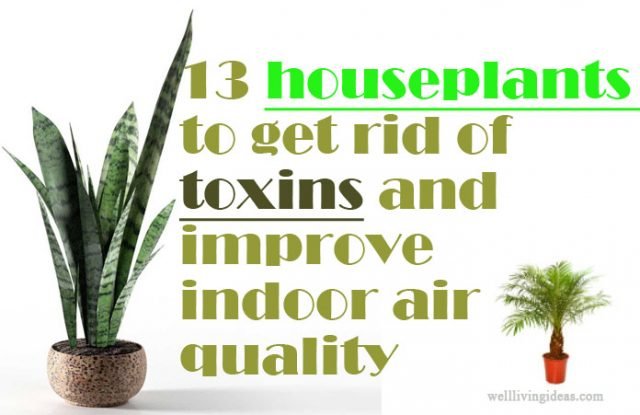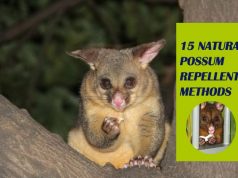There are various houseplants that help in filtering out Volatile Organic Compounds (VOCs). These plants will also be able to help clean Earth’s indoor air quality which is said to be more polluted than outside air. NASA started studying about houseplants that can be used to provide cleaner and purer air for their space stations during late 1980s. What these scientists got to know is that there are several houseplants that can help you purify your indoor air quality and make it that much healthier and easier to breathe. One good news here is the fact that such houseplants can be easily found and can be used to clean your house air and render it free from toxic agents.
Most of these household plants can be found in your neighbouring home improvement store or your local florist. You can easily pick up these plants and take them home. Make sure to take care of these plants because only then will they be able to take care of you. These plants are known to filter out toxic chemicals like benzene and formaldehyde and helps you by providing clean oxygen for you to breathe.
Below listed are few of the best indoor plants for air purification.
1. Aloe Vera
This is a sun loving plant and is very easy to grow plant. Aloe vera plants clear toxic components like benzene and formaldehyde. These components can be a derivative of chemical based paints and cleaners. Other than helping in purifying air quality, aloe vera has various other useful abilities like healing burns and cuts, healing pimples, etc. The clear liquid that is found in this plant’s leaves contains compounds like amino acids, enzymes and vitamins which have anti-inflammatory, antibacterial and wound-healing properties. Aloe vera is known to be an excellent house plant, owing to its healing properties. It is comparatively quite easy to grow and keeps your house clean with good air quality. Aloe vera is also very easy to take care of.
2. Spider Plant
The spider plant is one of the most resilient plants. They don’t die easily. If you are known for neglecting houseplants, be rest assured that you will be able to keep this one safe as they are require very low maintenance. These plants have very tiny white flowers and very rich foliage. You can bring home these plants to help fight off harmful compound like xylene, which is a solvent that is used in the printing, rubber and leather industries. It also helps by getting rid of toxic substances like carbon monoxide, formaldehyde and benzene. This plant is also known to be absolutely safe in case you have pets in your house. Spider plants are also known as airplane plants. They are pretty easy to regrow. All you have to do is cut one of the “spiders” and place that in a separate pot. Spider plants generally prefer dry soil and cool or average home temperature. They grow best when they experience bright sunlight on them indirectly.
3. Snake plant
A funny fact is that this plant is also called mother-in-law’s tongue. This plant is known to be the best in filtering benzene and formaldehyde. These components are very common in products like personal care products, tissues, toilet paper and cleaning products. These plants strive in humid conditions and low light. You can put one of these in your bathroom to get good air quality and remove toxins. These are one of the air purifying plants for the bedroom. You can choose to put few of these plants in your bedroom for clean air while you sleep. An interesting fact is that these plants take in carbon dioxide and release oxygen which is the opposite of what other plants normally do. You can get oxygen boost if your share your room with the snake plants.
4. Chrysanthemum (Chrysantheium morifolium)
These colorful flowers won’t just help you in brightening your day by brightening your house or your office, these plants also help in filtering benzene and formaldehyde. These components are very common in products like personal care products, tissues, toilet paper and cleaning products. These plants bloom best under direct bright sunlight. You need to place these plants besides a window so it gets maximum exposure to the sun. You can also buy these plants according to your interior colour. They come in nearly all colours, except for blue. There are different varieties of this plant. Make sure you choose a floral one rather than a garden one, as garden variety is mostly advantageous when planted outside.
5. Red-edged dracaena (Dracaena marginata)
This plant is best known for its red edges and its capacity to grow. It can grow and reach the height of an average room’s ceiling. You can use this plant to clean the air and remove dangerous pollutants such as formaldehyde, trichloroethylene and xylene. These pollutants can infiltrate your indoor air through gasoline, varnishes and lacquers. There are several dracaena plants. There are more than 40 different types of dracaena plants. This particular breed is distinguished clearly by the purple-red edges on the plant’s leaves. This plant can grow up to an impressive height of 15 feet, though it grows very slowly. It would be wise to put this plant in rooms with comparatively high ceilings and ones that are subjected to moderate sunlight. However, one downfall to this plant is the fact that they can prove to be toxic for dogs and cats. So, it would be wise for pet owners to go for some other air purifying plant.
6. Weeping fig/Ficus
The ficus is a native Southeast Asian plant. The weeping fig, also commonly known as ficus are one of the most effective indoor air purifying plants and is very helpful in filtering out pollutants that generally accompany furniture and carpeting such as trichloroethylene, benzene and formaldehyde. It can prove to be quite a task to care for these plants but once you get the watering conditions and light right, they can last for quite some time. The weeping fig is known to grow best when kept under bright indirect sunlight. While growing the weeping fig, you also need to dry out the soil between the watering. You can also opt to take this plant out and bring it back inside when the temperature is warm and quite above freezing.
7. Bamboo palm
Bamboo palm is also known as reed palm. These small plants produce small berries and flowers and generally grow well in shady and indoor spaces. Among all the plants that help in cleaning pollutants like benzene and trichloroethylene from the air, bamboo palm tops the list. You can also place this reed palm beside furniture that give off pollutants like formaldehyde. Central America and Mexico are home to these plants. This plant grows only till about 5-7 feet tall. The bamboo plant doesn’t like being overwatered. It grows well when exposed to indirect bright light and humidity. The bamboo plants are pretty exciting for indoor additions. You can also use them as decoration items.
8. Heart leaf philodendron (Philodendron oxycardium)
This is a climbing vine plant. The heart leaf has many advantages but they are not advised to be kept at home if you have kids or pets. It turns out to be very toxic if eaten. But it is very effective in removing the VOCs. The heart leaf philodendron plan is most effective in removing formaldehyde from your indoor air and improving the air quality. These plants are extremely low maintenance. They grow with the help of indirect light.
9. Peace lily
Peace lilies are extremely low maintenance plants. All they need to grow and bloom suitably is weekly watering and shade. The peace lily was at the top of a list that NASA made about plants that are most effective in removing the most common VOCs from the indoor air like trichloroethylene, benzene and formaldehyde. This plant can also fight VOCs like xylene and toluene. Peace lilies are famous for their low maintenance nature and ease of care. The peace lily is one of the few plants that can bloom indoors. They are comparatively smaller than other plants. This is a very good choice for a living room or office plant. This plant will humidify your indoor air as it has pretty high transpiration rate. You just have to be careful with these plants in presence of kids and pets as they can be harmful to them.
10. Boston fern
The Boston fern are one of the best low light indoor plants. They help purify indoor air from a cool location with indirect sunlight and humidity. They are comparatively easy to grow than other plants but they need humidity to grow effectively. You need to daily check this plant’s soil to see if it needs watering and you have to soak it properly at least once every month. The Boston fern is very effective in getting rid of toxic pollutants like xylene and formaldehyde.
11. English ivy
English ivy can prove to be quite destructive if grown outdoors. It can tear your gutters and damage your house’s exterior. But when you use this plant as an indoor plant, it can prove to be quite useful in getting rid of formaldehyde from the air and leaving your home with good quality air. It has an ability to climb any kind of structure which is why it can be used as a decorative item in your home or office. English ivy is not as high maintenance as the Boston fern. It likes part shade and part sun, so it is a good plant for growing indoors. All you need to do is occasionally water it and it will remain healthy owing to the mist during the winters.
12. Golden pothos
This plant is not easy to kill. If you are someone who neglect taking care of the greens in your house, you won’t have to worry about this one. It does not get affected when it is neglected or overwatered. This plant is great for people who don’t have a lot of indoor gardening experience. The only downside is these plants are not very high on the list of plants to remove formaldehyde and other toxic pollutants from your indoor air.
13. Azalea (Rhododendron simsii)
These beautiful flower shrubs can fight with toxic pollutants like formaldehyde coming from sources like foam insulation and plywood. These plants grow best in cooler areas, which is why it is a good idea to use this plant to improve the air quality in your basement or other shady areas. You need to mist and water this plant every few days if your house is comparatively dry. This will help create a more friendly and humid environment. You also need to take care to remove any dead leaves that fall in the soil to avoid diseases.

































